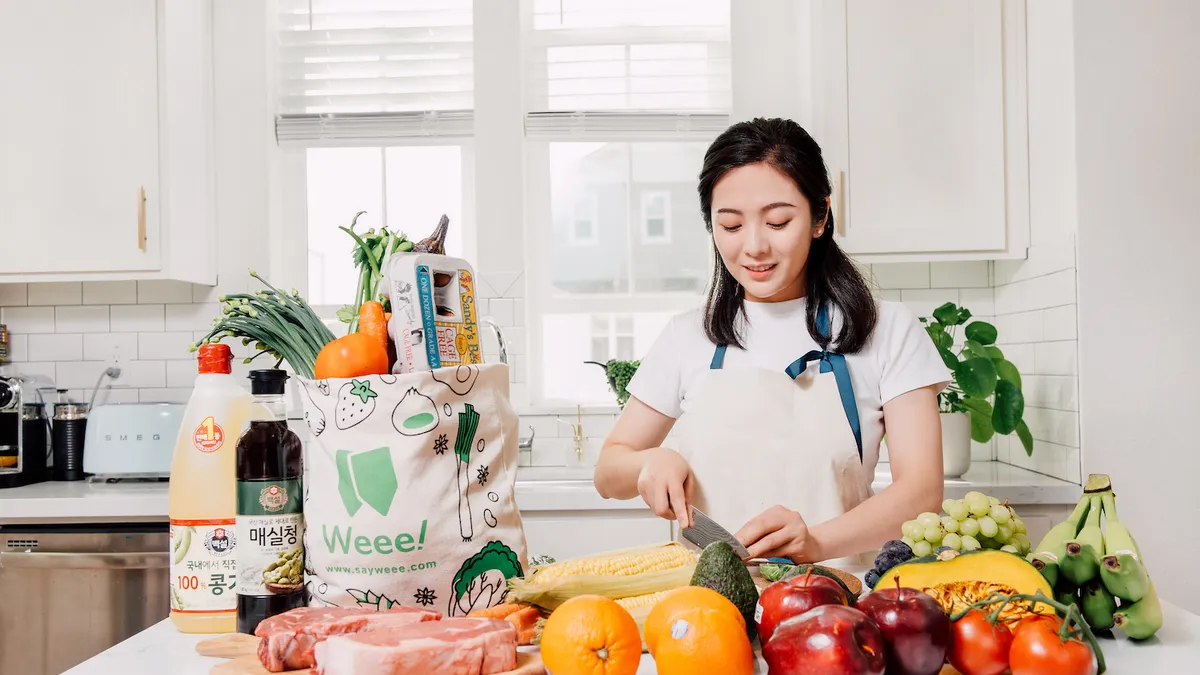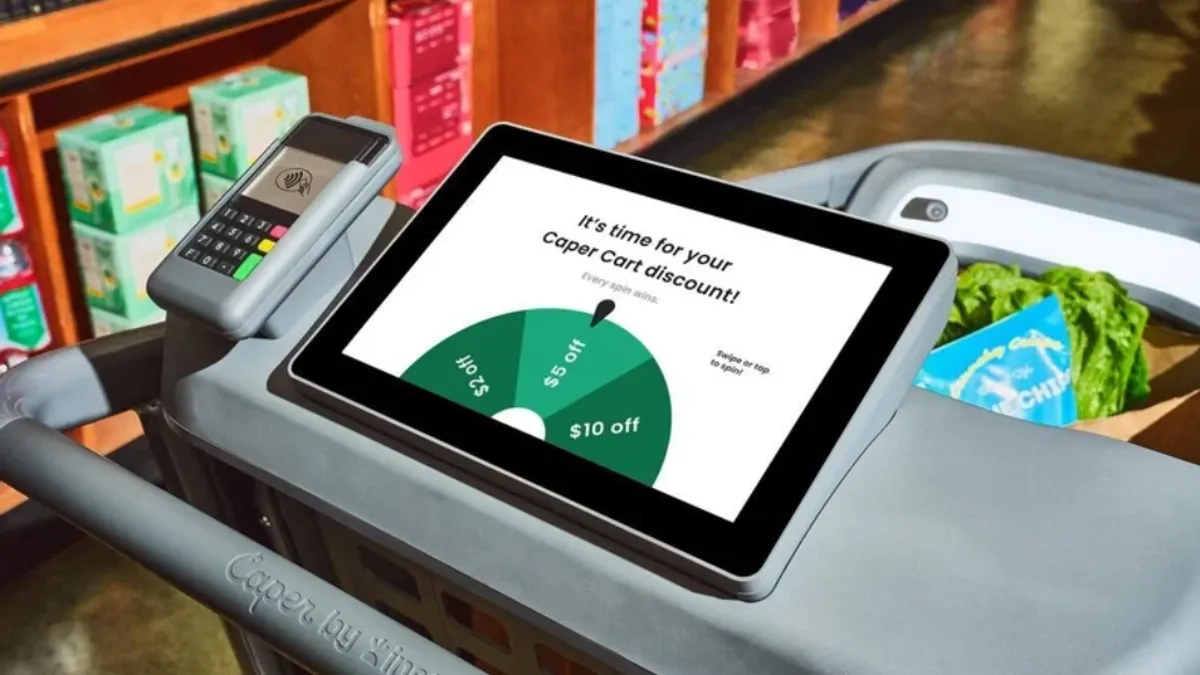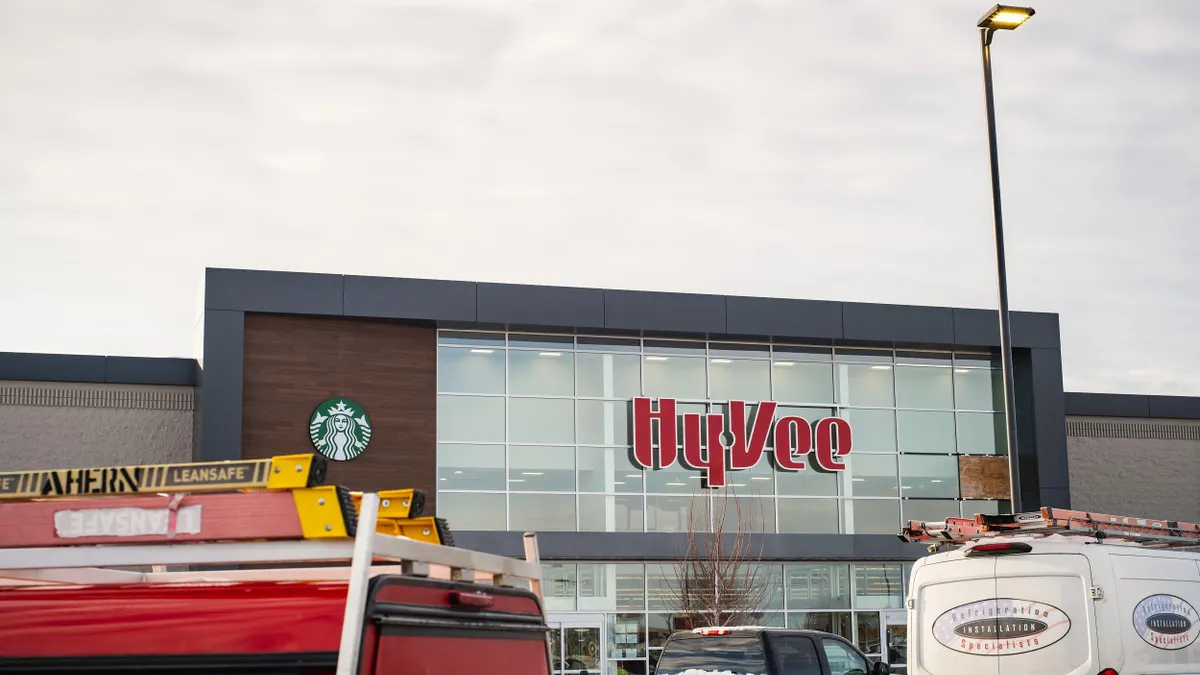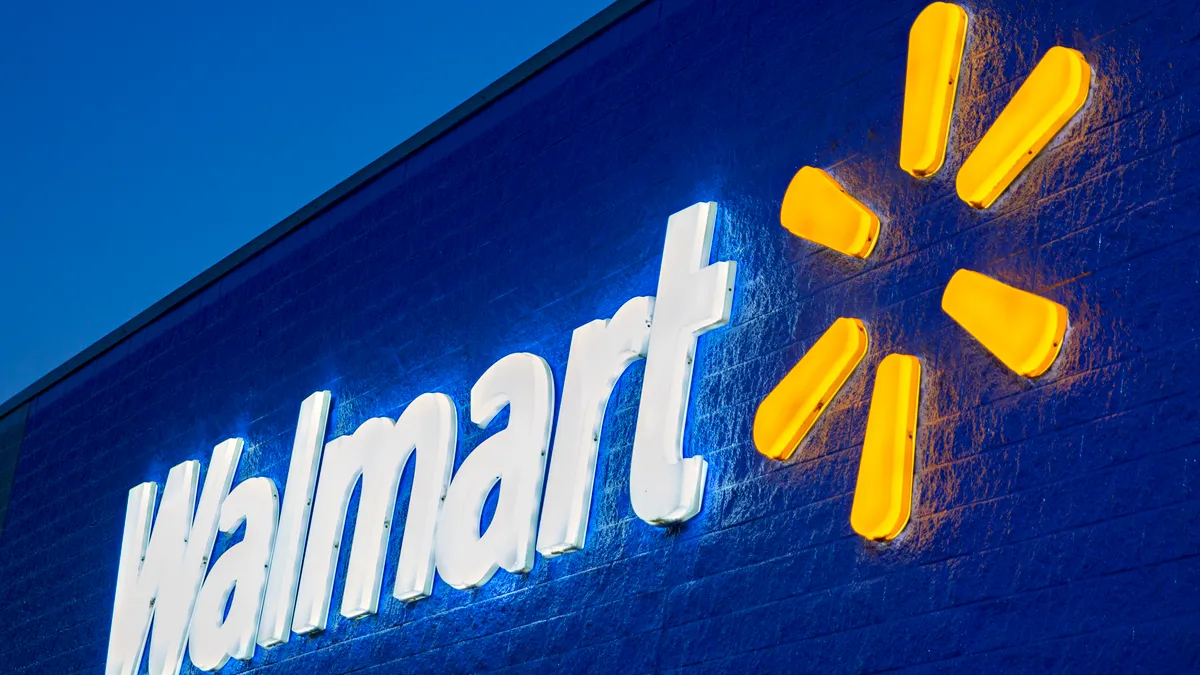The story of how Weee became a one-stop-shop for hard-to-find, fresh Asian groceries in the U.S. starts with the Chinese messaging app WeChat, $10,000 worth of fresh fish and one resourceful mom.
After immigrating to the U.S. from Wuhan, China, in 2003, Larry Liu, Weee’s founder and CEO, struggled to find Asian groceries in Northern California, often driving an hour or more to find familiar food and flavors. About a decade later, when WeChat started to gain popularity among Chinese immigrants, Liu recalled how one mom in a WeChat group he was in convinced a fisherman in the San Francisco Bay Area to catch, clean and deliver an order of $10,000 worth of fish to his neighborhood.
“Everyone was so happy, and once they got the fish, they cooked, made dishes and then they posted the pictures in the group,” he said. The excitement that surrounded this purchase coupled with the lack of accessible and affordable Asian groceries sparked the idea for Weee.
Soon after he got his green card, Liu said he quit his engineering job and founded Weee in 2015. “Just like the excitement when we got the really fresh fish, ‘Weee!’ is a very exciting sound that kids make when they are excited,” he said.
Currently, the e-grocer serves more than 120,000 households across five states and boasts nearly 5.2 million order fulfillments since 2017. The company has seen 700% revenue growth year-over-year and already achieved profitability in an industry known for its thin profit margins.
Weee was already seeing rapid growth before the pandemic hit, prompting an online shopping surge that “actually pulled in everything by about two years” for the company, Liu said. Revenue did not decline after March and April and instead has grown 20% since that peak, he said.
Weee expanded its markets in July, adding San Diego; Portland, Oregon; New York and New Jersey in addition to its service in Seattle, San Francisco, Los Angeles and Sacramento, California. In late August, the company announced it raised $35 million in Series C funding led by DST Global, bringing its total capital raised to more than $100 million.
Liu said he sees Weee’s competition as a mix of brick and mortar grocery stores that offer international products and online grocery services like Amazon Fresh and Instacart. In its quest to make it easier and more affordable for Asian consumers to get groceries, Weee focuses on freshness, efficiency, low prices and social engagement.
Liu attributes Weee’s continued growth to its ability to incentivize consumer interaction on social media platforms while solving pain points for Asian consumers in the U.S.
“The demand for Asian groceries has been climbing,” Neil Stern, the former senior partner at retail strategy and consulting firm McMillanDoolittle who now is the CEO of California-based Good Food Holdings, said.
More cities, more products and more shoppers
Stern and Liu agreed the rise is driven by continuing Asian population growth in the U.S., Asian products and culture gaining more mainstream popularity and consumers becoming more interested in different international cuisines. A Nielsen report from May estimated that Asian American purchasing power in the U.S. will reach $1.6 trillion by 2024.
“The challenge is when you’re serving an Asian consumer, there are dozens of different Asian ethnicities, so being good across all of those is going to be a challenge to anyone who wants to be in the space,” Stern said.
Right now, Weee, which according to Liu primarily serves Chinese Americans, focuses on the broader label of “Asian groceries.” The e-grocer will spotlight regional foods, but stops short of categorizing its assortment, which comes from China, Taiwan, Korea and areas close to where customers live, with labels like “Chinese,” “Japanese" and “Korean," Grace Chan, vice president of product and growth at Weee, said. Chan said there is some overlap with items — “I could name a couple of examples where I could call some foods items Taiwanese or Japanese.”
Weee relies on word of mouth and user-to-user recommendations on social media and communication platforms like WeChat, Facebook, Twitter and Instagram to drive business.
“I think that’s a lot more effective than us blasting out an ad,” Chan said.
Driving that social engagement, Liu said, is the company's “powerful” product curation, which is based on what other people with similar tastes are buying. “If you bought some strawberries from Safeway, you probably won’t tell your friends about it, but if you bought some white strawberries imported from Japan — that’s very delicious and unique and you crave for — you probably would tell your friends," he said.
The company's roughly 3,000 products are sourced from farmers, importers, distributors and manufacturers in a similar way to offline grocers, Liu said. “We won’t do the marketplace model where third-party vendors list their products. That’s not our plan,” he noted. “We want to curate and source products ourselves so we can maintain the quality.”
Weee offers free, scheduled delivery on orders over $35 — an amount “significantly” lower than the average amount ($250) a customer will spend per month. “Our drivers know exactly where they’re going and … are able to deliver 50 addresses all very close by,” he said. The e-grocer has avoided same-day delivery, pointing to cost savings and efficiencies with scheduled service, like being able to combine separate orders from a customer into one delivery.
The company started out focusing on group buys — neighbors teaming up to buy high quality, fresh products for wholesale prices. But the model wasn't working, and in 2017 Weee pivoted to its current e-grocer format. That same year, Weee launched its mobile app for iPhone and Android, which has seen more than 420,000 downloads, according to the company’s website.
When demand surged during the peak of the pandemic in March and April, the company had trouble filling orders. There was one week where customers only had a few hours to order before all of the slots filled up, Liu said.
In addition to scrambling to add warehouse space and workers, Liu said Weee rolled out curated bundles in the San Francisco and Seattle areas in late March that offered 10 to 15 essential items to shoppers. It's still selling these bundles, and last week Weee started offering them in Sacramento. If an item within the bundle is sold out, Weee replaces it with similar item.
Looking ahead, Weee aims to focus on geographic growth, ethnic group expansion and product category diversification. “For the next five years, our goal is to be the primary source of groceries for Asians in North America,” Liu said.
Weee’s plans for product category expansion include offering more packaged food, cosmetics, and personal care and home products. Produce, which currently includes more than 100 types of vegetables and more than 100 types of fruit, has been the company's most popular category along with meat and seafood, with the three making up 70% of product sales, Liu said. Kyoho grapes, a type of grape that is soft and “super sweet,” have been a recent hit with customers.
"Our goal is to be the primary source of groceries for Asians in North America."

Larry Liu
CEO and founder of Weee
Weee is working to strengthen its brand image and focus more on marketing — especially as WeChat faces a ban in the U.S. Weee uses the Chinese messaging app as a promotional platform, but beginning this spring the e-grocer has been focused on gaining traction on Facebook, Instagram and Twitter, especially as it looks to expand to other Asian groups in the U.S., Chan said.
“On that front, we’re quite ready in case something happens,” she noted.
A “small percentage” of users pay for groceries with WeChat Pay, a payment feature in the WeChat app, and Chan said the financial impacts of a WeChat ban would be very minimal.
Liu said Weee is looking to move into areas that have significant Asian populations. On its radar are Atlanta; Boston; Philadelphia; Chicago; Washington, D.C.; Houston; Dallas and San Antonio. “We plan to enter those markets within the next six months. Probably not all of them, but many of them,” Liu said, noting that the company has already starting moving ahead with steps to serve Houston.
“We’re rapidly expanding to other Asian groups, Asian communities, because the pain points are exactly the same,” Liu said. “They are all very underserved by the existing brick and mortar stores.”






















